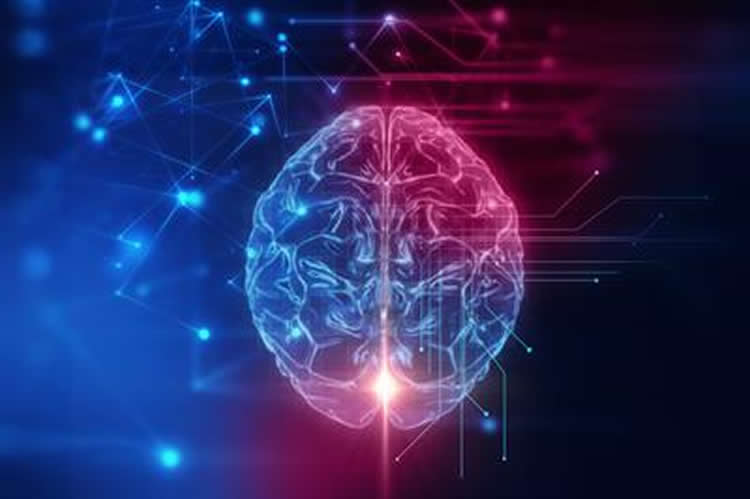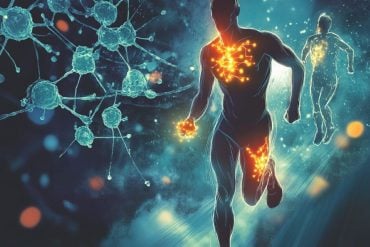Summary: Therapeutic hypothermia following a TBI significantly improves survival rate, a new study reports.
Source: Royal Holloway.
New research from Royal Holloway published today in Critical Care Medicine shows that lowering the body temperature of people who have suffered a traumatic brain injury (TBI) as soon as possible after the trauma may significantly improve chances of survival in adults.
Therapeutic Hypothermia (TH) involves reducing the body temperature of a person to protect neurons from being killed off or damaged. Neurons are part of the central nervous system and carry signals to and from the brain.
Protecting neurons
Researchers from Royal Holloway, Ashford and St Peters Hospital, and Imperial College London looked at how successful Therapeutic Hypothermia is and found that adults subjected to medically induced hypothermia are significantly less likely to die or suffer serious cognitive impairment due to damaged neurons.
“Lowering the body temperature to treat people with TBI is a controversial treatment, but one that our latest research has shown to reduce deaths and long-term injury,” said Professor Pankaj Sharma, Director of the Institute of Cardiovascular Research at Royal Holloway. “We have undertaken the largest such analysis of data on the use of therapeutic hypothermia and have found that patients have an 18% better chance of surviving and a 35% improvement in neurological outcome if they are given this treatment.”
TBIs: a world-wide problem
The World Health Organisation has predicted that traumatic brain injury (TBI) will become a major cause of death and disability across the world. TBIs can be caused by many things, including car accidents, but most are caused by falls. Currently there are around 5 million people in the US and 7.7 million people in Europe living with a TBI-related injury. Around 50% of those affected are unable to return to work, costing the economy $56 billion annually in the US alone.
American Football has recently come under the spotlight after research suggested that 40 percent of NFL players have suffered a TBI.
Good for adults, bad for children
Researchers looked at around 3,100 cases of TBI in adults and around 450 cases in children. They found that cooling the brain to a temperature of 33c for 72 hours, and then allowing the patient to return to their normal temperature of 37c at their natural speed is the most effective treatment.

“Whilst cooling adults is effective at providing the best possible outcome, cooling children instead can prove fatal. In children between the ages of 3 months and 18 years, cooling provoked a 66% increase in mortality,” said Professor Sharma.
“This research has far-reaching implications in medicine, potentially affecting the treatment of millions of patients world-wide. We hope that the results of this study encourage medical practitioners to consider the use of this method to enable people who suffer these injuries to live fuller, longer lives.”
This research was conducted by Ellie Crompton, who graduated in Biology earlier this year, Dr Ioana Cotlarciuc, Dr Thang S. Han, and Professor Pankaj Sharma, all from the Institute of Cardiovascular Research in the School of Biological Sciences at Royal Holloway. They also worked with Irina Lubomirova (MBBS) from Imperial College London.
Source: Royal Holloway
Image Source: NeuroscienceNews.com image is credited to Royal Holloway.
Original Research: Abstract for “Meta-Analysis of Therapeutic Hypothermia for Traumatic Brain Injury in Adult and Pediatric Patients” by Crompton, Ellie M. BSc; Lubomirova, Irina MBBS; Cotlarciuc, Ioana PhD; Han, Thang S. PhD; Sharma, Sapna D. MD; and Sharma, Pankaj PhD in Critical Care Medicine. Published online December 9 2016 doi:10.1097/CCM.0000000000002205
[cbtabs][cbtab title=”MLA”]Royal Holloway. “Traumatic Head Injuries Should Be Treated By Cooling The Patients.” NeuroscienceNews. NeuroscienceNews, 17 December 2016.
<https://neurosciencenews.com/tbi-cooling-neurology-5768/>.[/cbtab][cbtab title=”APA”]Royal Holloway. (2016, December 17). Traumatic Head Injuries Should Be Treated By Cooling The Patients. NeuroscienceNews. Retrieved December 17, 2016 from https://neurosciencenews.com/tbi-cooling-neurology-5768/[/cbtab][cbtab title=”Chicago”]Royal Holloway. “Traumatic Head Injuries Should Be Treated By Cooling The Patients.” https://neurosciencenews.com/tbi-cooling-neurology-5768/ (accessed December 17, 2016).[/cbtab][/cbtabs]
Abstract
Meta-Analysis of Therapeutic Hypothermia for Traumatic Brain Injury in Adult and Pediatric Patients
Objective: Therapeutic hypothermia has been used to attenuate the effects of traumatic brain injuries. However, the required degree of hypothermia, length of its use, and its timing are uncertain. We undertook a comprehensive meta-analysis to quantify benefits of hypothermia therapy for traumatic brain injuries in adults and children by analyzing mortality rates, neurologic outcomes, and adverse effects.
Data Sources: Electronic databases PubMed, Google Scholar, Web of Science, Cochrane Central Register of Controlled Trials, and ClinicalTrials.gov and manual searches of studies were conducted for relevant publications up until February 2016.
Study Selection: Forty-one studies in adults (n = 3,109; age range, 18-81 yr) and eight studies in children (n = 454; age range, 3 mo to 18 yr) met eligibility criteria.
Data Extraction: Baseline patient characteristics, enrollment time, methodology of cooling, target temperature, duration of hypothermia, and rewarming protocols were extracted.
Data Synthesis: Risk ratios with 95% CIs were calculated. Compared with adults who were kept normothermic, those who underwent therapeutic hypothermia were associated with 18% reduction in mortality (risk ratio, 0.82; 95% CI, 0.70-0.96; p = 0.01) and a 35% improvement in neurologic outcome (risk ratio, 1.35; 95% CI, 1.18-1.54; p < 0.00001). The optimal management strategy for adult patients included cooling patients to a minimum of 33[degrees]C for 72 hours, followed by spontaneous, natural rewarming. In contrast, adverse outcomes were observed in children who underwent hypothermic treatment with a 66% increase in mortality (risk ratio, 1.66; 95% CI, 1.06-2.59; p = 0.03) and a marginal deterioration of neurologic outcome (risk ratio, 0.90; 95% CI, 0.80-1.01; p = 0.06).
Conclusions: Therapeutic hypothermia is likely a beneficial treatment following traumatic brain injuries in adults but cannot be recommended in children.
“Meta-Analysis of Therapeutic Hypothermia for Traumatic Brain Injury in Adult and Pediatric Patients” by Crompton, Ellie M. BSc; Lubomirova, Irina MBBS; Cotlarciuc, Ioana PhD; Han, Thang S. PhD; Sharma, Sapna D. MD; and Sharma, Pankaj PhD in Critical Care Medicine. Published online December 9 2016 doi:10.1097/CCM.0000000000002205







